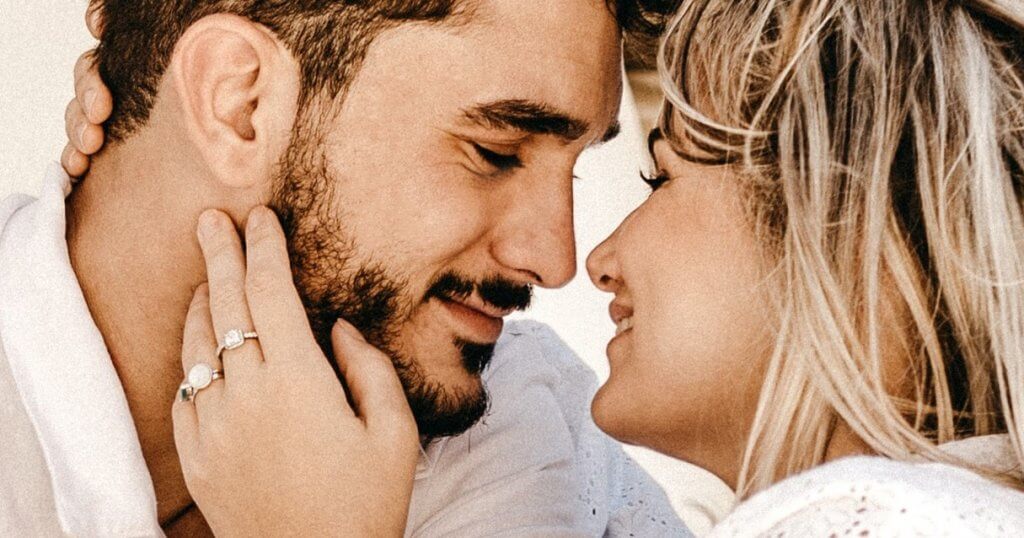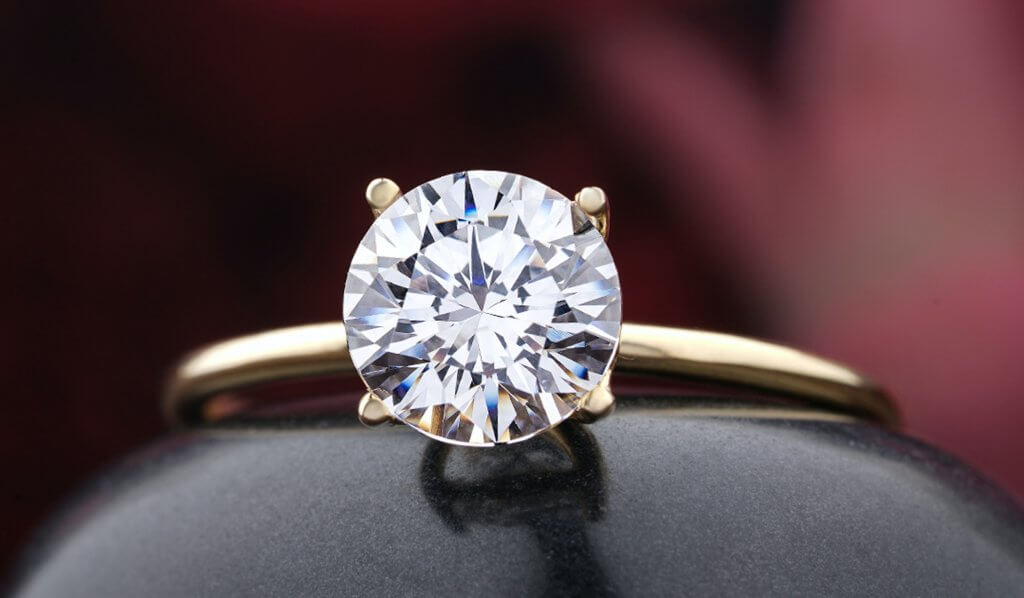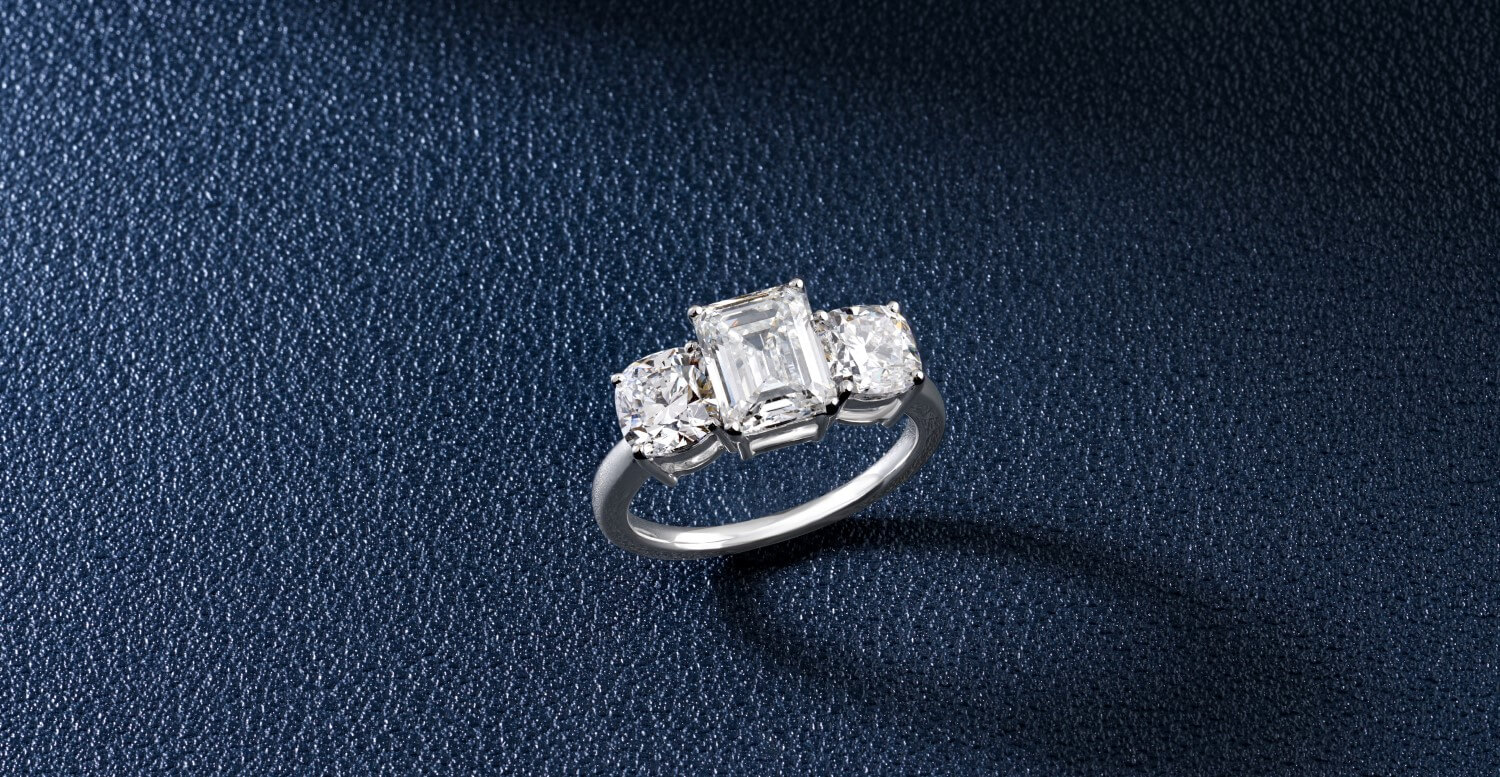Step by step guide: How to find a $6000 engagement ring
Key Takeaways
- It is important to be clear about what you are prepared to spend when it comes to finding that perfect engagement ring.
- $6000 is an excellent starting point, especially if you have some pretty strong ambitions.
- With this kind of budget, you should aim to spend around $4,800 – $5000 on the diamond itself. The rest will go to finding you the perfect setting.
- In order to find the best value diamond, you should understand the benchmarks of diamond quality, learn about eye cleanliness and certainly ensure to shop with highly regarded jewelers.
- You are in a strong position with this kind of budget, so have fun with it, keep focused, and it should be perfectly do-able to find a ring which will reflect the investment.

Engagement ring budgets come in all shapes and sizes, and figuring out where you stand on that long spectrum is, without a doubt, one of the most important things you will do. Before you even start learning about the specifics of investing into a diamond – before you even step foot within your chosen jewelry store – you’ve got to be clear and confident about what you’re willing to spend, and what you’re not.
Why? Because, like budgets, the engagement rings themselves come in all shapes and sizes. Those inclined can spend four, five, six, or seven figures on their ring, while the rest of us can easily find a beautiful piece at a much more realistic figure. You don’t want to step into the world of diamonds and engagement rings without first deciding where your budget places you.
Then again, if you’ve clicked through to this article, the hard part is probably over. $6,000 is an excellent starting point, and a great figure if you’ve got some strong ambitions for your engagement ring.
Is $6000 Good for an Engagement Ring?
Yes, $6000 is a great figure for finding an engagement ring. It’s right around the national average, which should give you a strong indication about what to expect at this figure.
The key to making the most of your budget, however, is to avoid getting to caught-up on this fact alone. Sure, many, many shoppers find their dream ring at this price point, but that’s not to say that every ring available at this price point is going to be a dream-worthy option for you to consider.
In order words, even though your budget is a strong one, you can’t afford to get complacent or assume that you don’t need to think things through as carefully as a shopper on a slightly tighter budget – say, a budget of $5,000 – would need to.
Even before you take the ring into consideration, loose diamonds can cost hundreds of thousands of dollars – if not millions – all on their own. Like virtually any other shopper, you will still need to limit your expectations in some areas – while recognizing that your budget will open you up to plenty of beautiful and high quality options.
How Much of Your Budget Should You Spend on the Diamond?
Aim to spend around $4,800 – $5,000 on the diamond alone. This represents around 80 – 83% of your total budget, which is a great ballpark to aim for whatever your budget.
Before you create a ring, you’ve got to find the diamond. Unless you’re going totally off-the-wall in terms of the ring’s design, it’s destined to be the primarily focal point, and getting it right is absolutely essential.
Since the average budget sits at around $6000, it pays to know what the average buyer is actually buying. In the US, the average diamond weight sits at around about 1 carat, with the 1 carat Round Brilliant solitaire design representing the top choice among buyers.
The rules of buying the best diamond possible are the same at any carat weight so, provided you understand the basics of diamond value – and of maximizing value for money – the $5,000 mark is great for shoppers looking to hit upon the 1 carat range.
Getting the Best Value Diamond in Five Steps
It takes time, research, and effort to ensure that the money you’re spending (and the emotional investment you’re making) into your engagement ring is going in the right direction. Fortunately, it’s not difficult to break the process down into a few key steps. Manage these, and you’ll find everything a lot more manageable.
- Understand the benchmarks of diamond quality…
Aspects like Cut, Clarity and Color all impact the visual quality of a diamond but, more importantly, they also play a pivotal role in determining its price. Two diamonds of the exact same weight and shape could be priced totally differently as a result of seemingly minor disparities in quality.
Cut is inarguably the most important to get right, but Clarity and Color are the top two categories for finding great value for money. The GIA Clarity scale, for instance, runs from FL and IF (flawless diamonds) through VVS1, VVS2, VS1, VS2, SI1, SI2 and, finally, the worst grades I1 and I2. The difference between the upper and lower grades is significant – thousands of dollars, in many cases – despite the fact that, in many cases, the visual difference between, say, a VVS1 and an SI2 diamond is only identifiable through strong magnification.
$5,000 could get you a small diamond with a high color and clarity grade, or it could get you a much, much bigger diamond that looks clean, but is made affordable by ‘less desirable’ grades.
- …And learn about eye cleanliness
You can’t expect to take full advantage of the benchmarks of diamond quality unless you’re comfortable judging eye cleanliness for yourself. This isn’t something you need years’ worth of training and experience in – anyone, even first-time shoppers, can identify whether or not a diamond’s visual quality (that is, what’s discernible without a loupe or strong magnification) is up to par.
Eye clean diamonds with low clarity grades offer the best value for money. There’s no use investing higher than you need to, and being wise about this aspect of quality will make it possible for you to get a much better diamond for your investment.
- Know that size shouldn’t be your only priority
Most shoppers find it hard to shake off that nagging feeling that getting the biggest diamond possible – an unmissable, weigh-her-hand-down rock – is the name of the game, but it’s certainly not the key to finding a beautiful engagement ring.
This is particularly true when you consider the fact that some diamonds are cut to maximize carat weight, without much investment into ensuring eye cleanliness, good proportions, symmetry, or color. These diamonds are more attractively priced than diamonds that appear to be similarly sized, since their poor cut means they will lack sparkle and, potentially, reveal plenty of inclusions and blemishes.
You should aim to find a diamond that fits within the right proportions, and meets expectations in terms of face-up appearance. If it surpasses those particular expectations, there may be a deal-breaking issue to blame. Don’t waste your money.
- Shop from highly regarded bricks-and-mortar jewelers
If you’re simply looking for the cheapest possible diamond then, sure, the online vendors will often be the ones undercutting the traditional jewelry stores. It’s no secret that they’re a cheap alternative, but it’s also no secret that buying a diamond isn’t something you can compare to buying anything else available online.
In other words, the ‘best value diamond’ is not the same as the cheapest diamond. Plenty of affordable diamonds aren’t worth the investment, and the secret to identifying whether or not that’s true for the diamond you’re considering lies in your own, in-person appraisal of it.
A lot of shoppers make the mistake of thinking their own input doesn’t matter, but it matters a whole lot, and you shouldn’t make the mistake of swapping your own judgement for the less-than-ideal experience available online. Find an excellent jeweler, and learn to put your trust into their expertise.
- Browse online first
No one expects to walk into a jewelry store and launch into a conversation about diamonds for the first time without having done the appropriate groundwork beforehand. At WillYou.Net, we’re committed to ensuring shoppers are armed with the research they need to make the most out of their consultations, but there’s certainly something to be said for getting practical, and learning how to compare diamonds before you find yourself in the situation.
It’s a great idea to browse diamonds online first, but, as we mentioned above, never commit any money until you’ve seen them in person.
The Ring
A $1,000 – $1,200 budget for the ring setting is a great figure to work with. As always, we’d steer you toward creating a custom design alongside your jeweler, rather than overpaying for a particular brand name or supplier. Working directly with the person who will be making it is, for many reasons, the better option – not just in terms of giving you more freedom and creativity, but also in ensuring that the ring has been painstakingly designed and crafted, rather than cast from a mold used countless times over.
A budget of this size will open you up to more expensive options, such as the warmer, brighter 18K gold and a higher CTW for your ring (meaning more accent stones if the design calls for them.
Keep in mind that, however healthy your budget, there are still plenty of ways to ‘misspend’, or channel money in a direction that may limit your options in other ways. Just because you can afford a better clarity than someone on, say, a $4000 budget – or just because your budget can stretch to one of the designs available from a leading, high-end jewelers – doesn’t mean that doing so will get you the most bang for your buck.
It’s understandable shoppers feel compelled toward the ‘big names’ of jewelry design. The prestige and excitement that surrounds them means that, when you’ve got the means available to you, it’s easy to feel sold on a name, rather than an actual product.
Even the designers housed in many jewelry stores across the US, while not as coveted as names like Tiffany & Co. or Bvlgari, are able to charge a premium as a result of their own reputations.
Our advice? Work directly with your jeweler. Sit down to consult directly with the person who will be designing and creating it, and you’ll find you get a much more attractive price without having to sacrifice on quality or creativity.
Our Summary
A budget of $6,000 for your engagement ring puts you in a strong position. While a figure like this will, of course, necessitate plenty of planning and thought, it’s healthy enough to enable you to get a truly impressive diamond, and to walk out of the jewelry store with a beautiful ring at the end of the process.
Our best advice to shoppers on this budget would be to take it slow, do the research, and start making plans ahead of that initial consultation. The worst thing you can do is find out that $6,000 is about average for an engagement ring, and commit to one of the first options you find without thinking things through.
Obviously, there’s a lot more to it than that, but striking that balance between confidence and caution is key – whatever your budget – and will ensure that you don’t run into any doubts over how the ring turned out on the day of the proposal.
Get to know the specifics of diamond quality – what aspects of quality a beautiful ring does need, and what it doesn’t – and the sort of ring you should expect to get on your budget. Keep in mind that the trick isn’t finding the biggest ring possible at $6,000, but one that truly reflects the investment you have made into it.

Jul 5, 2021 By Willyou.net
How Much Does a 1 Carat Diamond Ring Cost?

Oct 29, 2021 By Willyou.net
How Much Does a 2 Carat Engagement Ring Cost?








